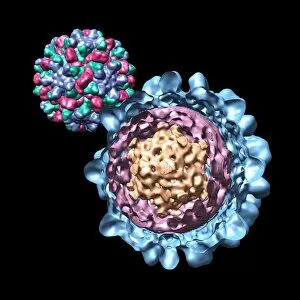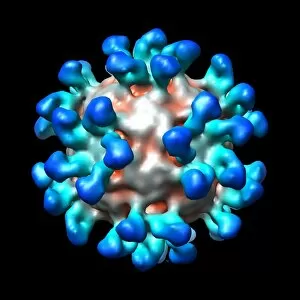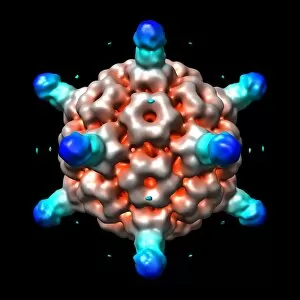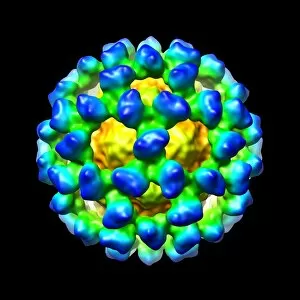Cryo Em Collection
"Cryo-EM: Unlocking the Secrets of Microscopic Worlds" In the realm of scientific exploration
All Professionally Made to Order for Quick Shipping
"Cryo-EM: Unlocking the Secrets of Microscopic Worlds" In the realm of scientific exploration, Cryo-Electron Microscopy (Cryo-EM) has emerged as a groundbreaking technique, revolutionizing our understanding of microscopic structures. With its ability to capture high-resolution images of biological specimens in their native state, Cryo-EM has paved the way for remarkable discoveries. One such revelation involves Bacteriophage phi29, where Cryo-EM enabled scientists to visualize this tiny virus with unprecedented detail. By combining experimental data and computer models, researchers gained insights into its intricate architecture and mechanisms that drive infection. Simian immunodeficiency virus (SIV), a close relative of HIV, also fell under the scrutiny of Cryo-EM. This powerful imaging technique allowed scientists to study SIV's structural features at an atomic level, providing crucial information for potential antiviral strategies. The application of Cryo-EM extended beyond viruses alone. Murine norovirus with antibody fragments became another subject for investigation. Through cryogenic preservation and electron microscopy techniques, researchers were able to observe how these antibodies interacted with the virus particles - knowledge that could aid in designing effective therapeutics against norovirus infections. Expanding on previous successes with Bacteriophage phi29 and Cucumber necrosis virus using computer models; Cryo-EM offered new avenues for studying other viruses like Human rhinovirus and Ribgrass mosaic virus. These computer-generated models provided valuable insights into viral structure-function relationships while complementing experimental findings obtained through cryogenic imaging. With further advancements in technology came breakthroughs involving Human rhinovirus coupled with antibodies. By visualizing these interactions using Cryo-EM techniques, researchers gained critical information about how antibodies neutralize viral threats within our bodies – knowledge instrumental in developing targeted treatments against respiratory illnesses caused by rhinoviruses. Bacteriophage P22 joined the ranks as another virus studied using Cryo-EM and computer models.











